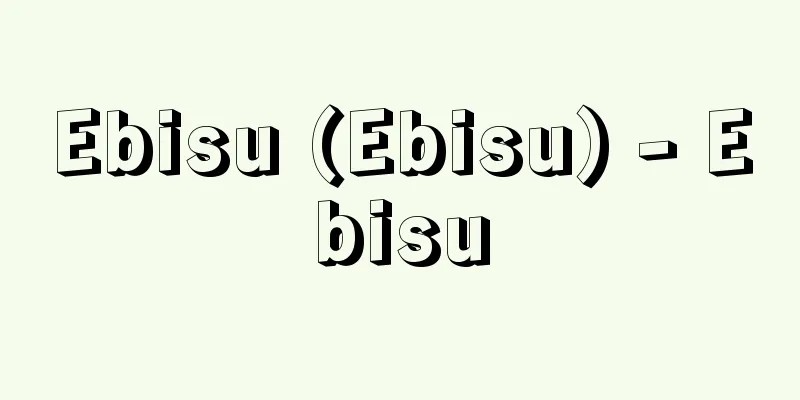Juvenile hormone - Juvenile hormone

|
Abbreviated as JH. A methyl ester of epoxysesquiterpenoid secreted from the corpus allata of insects, it is a hormone that actively maintains larval characteristics in opposition to metamorphosis. There are three types of hormones involved in regulating insect molting and metamorphosis: JH-I, -II, and -III. When ecdysone (molting hormone) acts under the action of JH, the larvae molt into the next instar larvae, but without JH, the larvae metamorphose, becoming pupae in complete metamorphosis, and adults in incomplete metamorphosis. When administered to final instar larvae, it produces aged larvae without metamorphosis, when JH is administered to adults together with ecdysone, it partially expresses pupal characteristics, and when JH is administered artificially to pupae, they molt into secondary pupae, so it is also called the status quo hormone. JH-I has the strongest physiological effect, and JH-III has the weakest. JH-I is limited to Lepidoptera, whereas JH-III is universal in insects except Diptera (flies). During the pupal stage, JH is not secreted and emergence is induced by ecdysone. Its function in adults is different, controlling the maturation of the gonads, the synthesis and secretion of vitellogenic proteins, and their uptake by oocytes. [ I ] JH-O: C19H32O3 ( 308.46 ). It was isolated exclusively from developing eggs of the tobacco caterpillar moth Manduca sexta . Part of this hormone mixture is an essential component for larval development. Oil. +13.8° (methanol). 1.4752. The stereochemistry of the natural product is ( E , E ), and the epoxy moiety has been found to be (10R , 11S ) through synthesis, with the isomer showing little biological activity. [CAS 117019-48-4] [ Ⅱ ] JH-Ⅰ: C 18 H 30 O 3 (294.45). Boiling point 110 ℃ (7 Pa). +14.9° (chloroform). 1.4732. [CAS 13804-51-8] [ Ⅲ ] JH-Ⅲ: C 16 H 26 O 3 (266.36). Oily substance. Boiling point 125-126 ℃ (11 Pa). [CAS 22963-93-5] Source: Morikita Publishing "Chemical Dictionary (2nd Edition)" Information about the Chemical Dictionary 2nd Edition |
|
略称JH.昆虫のアラタ体から分泌されるエポキシセスキテルペノイドのメチルエステルで,変態にきっ抗して幼虫形質を積極的に維持させるホルモン.昆虫の脱皮・変態の調節に関係するホルモンは,JH-Ⅰ,-Ⅱ,-Ⅲの3種類で,JH作用下にエクジソン(脱皮ホルモン)が作用すると幼虫は次齢の幼虫へと脱皮するが,JHがないと幼虫は変態して,完全変態ではさなぎへ,不完全変態では成虫へと変態する.終齢幼虫に投与すると変態せずに加齢幼虫を生じたり,成虫にエクジソンとともにJHを投与すると部分的にさなぎ形質を発現したり,さなぎに人為的にJHを投与すると二次さなぎに脱皮することから,現状維持ホルモンともよばれる.生理作用はJH-Ⅰがもっとも強く,JH-Ⅲがもっとも弱い.存在は,JH-Ⅰが鱗翅目に限られるのに対し,JH-Ⅲは双翅目(ハエ)を除いて昆虫に普遍的である.さなぎの期間はJHは分泌されずエクジソンにより羽化する.成虫に対しては機能が異なり,生殖腺の成熟,卵黄形成タンパク質の合成・分泌と卵母細胞での取り込みなどを支配する.【Ⅰ】JH-O:C19H32O3(308.46).タバコに寄生するイモムシガManduca sextaの発育中の卵からのみ分離された.このホルモン混合物の一部は幼虫の発育に必須な成分である.油状物.+13.8°(メタノール).1.4752.天然物の立体は(E,E)であり,エポキシ部分は合成により(10R,11S)であることが判明し,異性体にはほとんど生理活性がみられない.[CAS 117019-48-4]【Ⅱ】JH-Ⅰ:C18H30O3(294.45).沸点110 ℃(7 Pa).+14.9°(クロロホルム).1.4732.[CAS 13804-51-8]【Ⅲ】JH-Ⅲ:C16H26O3(266.36).油状物質.沸点125~126 ℃(11 Pa).[CAS 22963-93-5] 出典 森北出版「化学辞典(第2版)」化学辞典 第2版について 情報 |
Recommend
Adulterous Bible (English)
…However, there have been many examples throughou...
Attis
…She was originally the great mother goddess of a...
Chandler Cycle - Chandler Cycle
Also known as Chandler motion. The period of one c...
Mandragora (English spelling)
A perennial plant of the Solanaceae family native ...
Cetoniinae
...The larvae feed on these and grow, then pupate...
The noble fronde
The Fronde rebellion was a reaction to the desire...
"India Law Study" - India Law Study
…After studying law at the University of Salamanc...
Religious Wars
In a broad sense, it is used to refer to any war ...
Old Sarum
…Located on the River Avon, it was a trading cent...
Magnifying glass - magnifying glass
Also known as a magnifying glass or loupe. A conve...
Eiichi Makino
Criminal law scholar. Born in Takayama, Gifu Pref...
Sexagesimal system - Rokujisshinho
A number system in which 60s are counted together ...
chimney pot
…Chimneys were needed for every fireplace, and in...
Vishnevskaya, GP (English spelling) VishnevskayaGP
…As a conductor, he made his debut at the Bolshoi...
Silurus glanis (English spelling) Silurusglanis
... In addition to the above, there are other fis...









